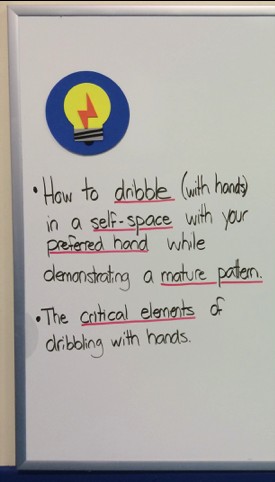Starting each lesson effectively is crucial for student engagement and comprehension. A simple yet powerful technique gaining traction among educators involves outlining the “What, Why, and How” of the lesson right from the beginning. This strategy, championed by experienced educators like Terri Drain, has demonstrated a significant positive impact on both teaching methodologies and student learning outcomes.
What: Defining the Lesson’s Objective
The “What” component clearly articulates the day’s learning objectives, essentially the content students will engage with. It’s beneficial to use the precise language found in curriculum documents to maintain alignment with educational standards. For instance, referencing SHAPE America’s Grade Level Outcomes (GLOs) can provide a solid framework for defining the “What.”
For younger learners, particularly in grades K-2, the formal language of educational standards might be challenging. In such cases, it’s helpful to identify and highlight potentially difficult terms within the learning objective. Underlining these terms, perhaps in a distinct color, signals to students that these are key concepts that will be defined and explored together as a class. This proactive approach ensures everyone is on the same page regarding the lesson’s content.
Why: Establishing Relevance and Purpose
The “Why” aspect of the lesson introduction focuses on connecting the day’s learning to broader, more meaningful concepts. Drawing from frameworks like Understanding by Design (UbD), the “Why” helps students understand the purpose and relevance of the lesson beyond the classroom. It bridges the gap between immediate learning activities and their long-term applicability.
By dedicating a few minutes to explain how mastering the lesson’s objectives can be beneficial outside of the specific subject, educators can foster a deeper sense of purpose in their students. This involves illustrating how the skills and knowledge gained are transferable and valuable in different contexts, encouraging students to see the bigger picture of their education. This approach transforms learning from a set of isolated tasks into a connected and relevant experience.
Similar to the “What,” the “Why” section might also include terms that require further clarification or discussion. Underlining terms here prompts class discussions to define key concepts or brainstorm examples of how the lesson’s objectives apply to real-life scenarios. For example, when discussing fundamental movement skills, prompting students to identify sports or activities where dribbling is essential makes the “Why” more tangible and relatable.
How: Clarifying Success and Mastery
The final component, “How,” focuses on outlining the criteria for success in the lesson. It provides students with a clear understanding of how they will demonstrate mastery of the day’s objectives by the end of the class. Making these success indicators explicit is instrumental in helping students maintain focus throughout discussions and activities.
In subjects like physical education, where students can easily become engrossed in activities and lose sight of learning goals, the “How” is particularly valuable. By clearly defining how students can demonstrate their learning, educators ensure that activities are purposeful and aligned with intended outcomes. This structured approach prevents activities from becoming mere playtime and reinforces their educational value.
For younger students, consider using fill-in-the-blanks for key elements of the “How” section, especially during the initial lessons of a new unit. This technique serves as a helpful prompt, aiding recall of success criteria. As students progress and become more familiar with the unit’s objectives, these prompts can be gradually phased out, fostering independent understanding and retention.
Implementing “What, Why, How” for Enhanced Teaching
The “What, Why, How” strategy offers a straightforward yet profoundly effective method to structure lesson introductions. By clearly defining the objectives (“What”), establishing relevance (“Why”), and outlining success criteria (“How”), educators can significantly enhance student engagement, focus, and ultimately, learning outcomes. This approach not only clarifies the purpose of each lesson but also empowers students to take ownership of their learning journey.
Inspired by the insights of educators like Terri Drain, integrating the “What, Why, How” framework can be a transformative step towards refining teaching practices and creating more impactful learning experiences. Educators are encouraged to experiment with this technique and adapt it to suit their specific subject areas and student demographics for optimal results.
Share your experiences! How do you currently introduce lesson objectives to your students? Consider incorporating the “What, Why, How” method and observe the positive changes in your classroom.
